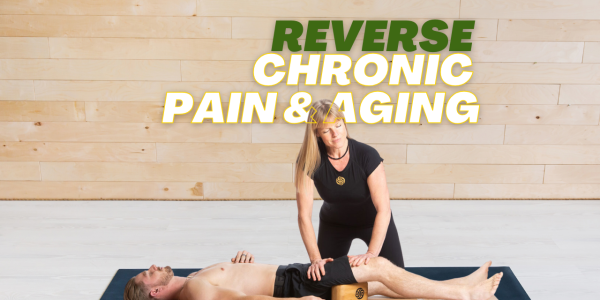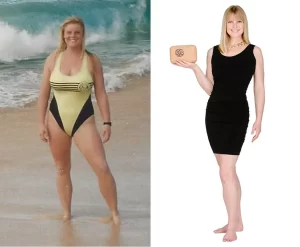I know you have heard time and time again that chronic pain can only be fully relieved with pharmaceuticals.
Allow me to debunk that myth with succinct facts that say otherwise. At the end of this blog, you’ll perfectly understand the correlation between chronic body pain, daily habits, bad posture, premature aging, and the solution to all four!
Do you know the largest organ of your body is not actually your skin as scientists used to believe? It’s your Fascia!
So What is Fascia Anyway?
Fascia is a connective tissue that joins every cell in the body together from the head to the toes. It is a form of fabric between every cell in the body. You could also refer to it as the building block of every muscle in the body.
“What’s the function of this Fascia?” I hear you ask.
Fascia is responsible for the structure and flexibility we see in the human body.
It contains two proteins; Collagen and Elastin which provide structure and allow for flexibility and communication between organs, tissues, and your brain.
The primary reason your muscles can withstand stretch, wear, and tear is due to the presence of collagen and elastin. These proteins are the main components of the fascia, the connective tissue that envelops and supports your muscles and every organ in your body.
And did you also know that unhealthy and “stuck” fascia is linked to chronic pain and aging? You didn’t? Well, stay with me.
In our daily activities, we tend to either underutilize or overutilize certain muscles depending on the nature of our jobs.
For instance, a factory worker would more likely utilize his biceps, core, and leg muscles than an office executive who spends most of his day seated behind an oak table.
The difference between these two people is that the factory worker would develop more scar tissue as he is prone to more muscle sprains or tears than the office executive. The office executive, on the other hand, as a result of the underutilization of his muscles, would most likely experience muscle atrophy and “adhered fascia”, which I’ll talk more about in a minute.
Scar tissue forms when connective tissues are worn out or torn. This tissue lacks adequate oxygen and nutrient circulation, which can contribute to weight issues and particularly to skin that appears aged and dull.
Aside from the muscle and aging situation, an overuse of the muscles, or in this case, several connective tissues, causes a tightness that usually leads to pain. The pain is first felt, followed by a gradual formation of scar tissue, and finally, a physical manifestation of unhealthy aging.
What’s the solution to all of this?
Throughout history, humanity has persistently sought methods to alleviate discomfort. Before the emergence of drug therapy, various non-pharmacological approaches were employed to relieve muscle pain, create balance in the physical body, and combat aging. These methods include acupuncture, yoga, and massage, with roots dating back over 5000 years.
Additionally, practices such as hypnosis and diaphragmatic breathing have also been utilized to promote wellness and alleviate physical discomfort. These ancient practices continue to be valued for their therapeutic benefits and holistic approaches to health and well-being.
Diaphragmatic breathing involves inhaling and exhaling deeply to optimize oxygen supply within the body and expel toxins through the nostril, as well as activate your parasympathetic nervous system to accelerate healing.
Did you know that diaphragmatic inhalation can increase oxygen intake by up to 600%? Research shows that proper exhalation contributes significantly to weight loss, with 84% attributed to this process. How remarkable is that?!
As mentioned earlier, scar tissue in the body adds weight and obstructs the efficient flow of oxygen, nutrients, and toxins. This impedes oxygenation and toxin elimination, potentially leading to chronic illnesses over time.
And since our fascia connects from our toes to our nose, our feet to our skull, and in and around every joint and organ throughout the body, any adhesion in one area can affect the entire body.
For example, when our fascia adheres to the bone in our left shin, it pulls on the entire chain within our body. This can cause tightness and chronic pain on the opposite side, potentially resulting in right upper shoulder or back pain.
So if you have lower back pain, it is very likely that it has nothing to do with your back, and everything to do with fascia locked up elsewhere in your body. This is proven when people perform block therapy, releasing fascia in their toes, and then chronic shoulder or back pain goes away.
Fortunately, natural therapeutic advancements now offer effective methods for achieving optimal health, including relief from chronic pain, reduction of scar tissue, and the prevention or management of premature aging. These approaches integrate scientifically validated techniques to enhance well-being and longevity.
Block Therapy – The modern, non-pharmacological method of achieving optimal health
Block Therapy is a self-care practice that uses the concepts of fascia decompression and wooden blocks to melt and remove scar tissue that has held the body in negative alignment over a long period of time.
Fascia decompression is a process of restoring the body’s fascia to its original position from the effects of a bad posture that has held it in negative alignment and compression.
Block therapy achieves this using 3 pillars of focus:
Creating space by decompressing fascia: In the first stage of Block Therapy, the individual lies on a wooden block for 3 minutes. This 3-minute duration is one of the two fundamental rules of Block Therapy.
The block is placed on various parts of the body, and the 3-minute count is maintained for each position. This practice helps to unravel the tensed fascia layers, allowing for a deeper release from the root of the muscle and creating space within the tissue.
Inflating space through diaphragmatic breathing: The space that has been created by the undoing of tense fascia layers is then filled up with an influx of oxygen thanks to a more effective diaphragm. This also allows for easy expulsion of toxins as the focus of this technique is the slow exhalation. During exhalation, the diaphragm is lifted against the force of gravity and so toxic air is expelled through the lungs. This forms the second rule of block therapy: your breath is your guide.
Maintaining space by supporting proper postural foundations: Maintaining space by supporting proper postural foundations is crucial for achieving optimal results. This involves creating a system that consciously reminds individuals to maintain good posture.
Working in tandem with the initial techniques, this approach addresses one of the main causes of chronic pain: deviation from proper posture. By reinforcing good posture, individuals can prevent and alleviate constant pain. Working in tandem with the first two techniques to achieve optimal results is creating a system that helps to consciously remind one to maintain good posture. It should be common knowledge now that a deviation from good posture is one of the main causes of constant pain.
The benefits of this modern breakthrough in chronic pain therapy:
- Alleviate Chronic Pain: Release tension in the fascia to reduce persistent pain.
- Accelerate Recovery: Enhance healing by improving blood flow and oxygen delivery to tissues.
- Assist with Maintaining Size and Shape: Support muscle tone and body alignment.
- Encourage Healthy Detoxification: Promote the elimination of toxins from the body.
- Reverse the Aging Process: Improve overall health and vitality by addressing fascia health.
- Alleviate chronic pain
- Accelerate recovery
- Assist with maintaining size and shape
- Encourage healthy detoxification
- Reverse the aging process throughout the body for optimal health.
Why does this therapy use wooden blocks?
Block Therapy uses wooden blocks made from untreated bamboo and elm trees due to their natural properties and durability. These blocks are meticulously designed with specific dimensions and rounded corners to fit the delicate contours of the body, ensuring maximum comfort and effectiveness during therapy. By using untreated materials, Block Therapy avoids harmful chemicals, making the therapy safe and eco-friendly.
There are two types of blocks: the Block Buddy and the Block Baby. Each block allows different body types to access deeper layers of fascia in various parts of the body. The choice of bamboo and elm trees is intentional, as their density closely matches that of human bones.
This similarity makes the blocks gentle on the body’s bony framework, allowing for effective fascia release. The carefully crafted blocks promote better blood flow, reduce tension, and aid in overall muscle and tissue health, providing a gentle yet effective therapy experience.
–>> BEGIN YOUR JOURNEY WITH BLOCK THERAPY TODAY <<–
"Block Therapy has changed my life. It certainly saved me from a lot of pain. It’s really helped to bring down my anxiety and to find space for meditation which I always felt I should do but I never really could consistently get to. It rolls everything into one and it’s just such a wonderful way to take care of yourself."
~ Beth Lachance

Block Therapy™ by my friend, Deanna Hansen, is a revolutionary bodywork practice that combines meditation, exercise, and therapy to promote optimal health and well-being.
Daenna is a Certified Athletic Therapist who focuses on deep tissue work and fascia release to alleviate chronic pain, improve posture, and enhance overall health.
About 15 years ago, Daenna discovered an intuitive technique that she calls “unzipping time at the seams” within her tissue. This method, inspired by the golden mean pattern, involves a natural spiraling movement that releases trapped emotions and adhesions, improving blood and oxygen flow.
Initially applying it to herself, she noticed significant changes, which she later confirmed in others. Her process, Fluid Isometrics, alleviates pain and restores tissue health by decompressing and untwisting the spine, reversing the effects of injury, stress, and poor habits.
Tap into the avalanche of benefits that block therapy has to offer with its starter package
PLUS, Enjoy a BONUS worth $79: a Breast and Lung Health Intensive Class.
ANSWERING FAQS ABOUT BLOCK THERAPY
Is Block Therapy the same as Yoga?
- No, Block Therapy is not the same as Yoga. While Yoga uses a strengthening technique to lengthen fascia, Block Therapy employs a unique three-step method to unravel and release tense, inert fascia.
Can Block Therapy melt scar tissue completely?
- Yes, with consistent practice and thorough application of the techniques, including maintaining space, Block Therapy can help melt scar tissue completely over time.
What makes the blocks used in Block Therapy special?
- The blocks in Block Therapy are made from untreated bamboo and elm trees. They are chosen for their density, which closely matches that of human bones, making them gentle on the body’s bony framework.
How does Block Therapy improve posture?
- Block Therapy improves posture by addressing the root cause of misalignment and tension in the fascia. By creating and maintaining space in the fascia, it helps correct posture and build a strong foundation for pain-free living.
What are the benefits of the Block Therapy Starter Package?
- The Block Therapy Starter Package includes blocks (Block Buddy or Block Baby), a lifetime access starter program (12-day full body fascia program, beginner positions, conscious walking video), free monthly classes, and a bonus Breast and Lung Health Intensive Class.
Who can benefit from Block Therapy?
- Block Therapy is beneficial for anyone looking to alleviate chronic pain, improve posture, accelerate recovery, maintain size and shape, encourage healthy detoxification, and reverse the aging process for optimal health. It’s suitable for people of all ages and fitness levels.
Are the benefits of Block Therapy backed by scientific research?
- While specific scientific studies on Block Therapy may vary, the principles of fascia release and improved body mechanics through therapeutic movement are supported by a scientific understanding of fascial anatomy and function.
Can Block Therapy be practiced by beginners?
- Yes, Block Therapy is suitable for beginners. The practice provides detailed instructions and beginner positions to help newcomers learn and benefit from the techniques safely and effectively.
How often should one practice Block Therapy?
- To experience optimal benefits, Block Therapy recommends practicing regularly, ideally integrating it into daily routines. Consistency is key to achieving and maintaining results over time.
Is Block Therapy suitable for individuals with existing health conditions?
- Before starting any new therapeutic practice, including Block Therapy, individuals with pre-existing health conditions should consult with a healthcare professional to ensure it is appropriate for their specific needs and health status.
Ready to experience the transformative benefits of block therapy for yourself? Don’t wait any longer! Start your journey to pain relief, better posture, and overall health improvement today.

